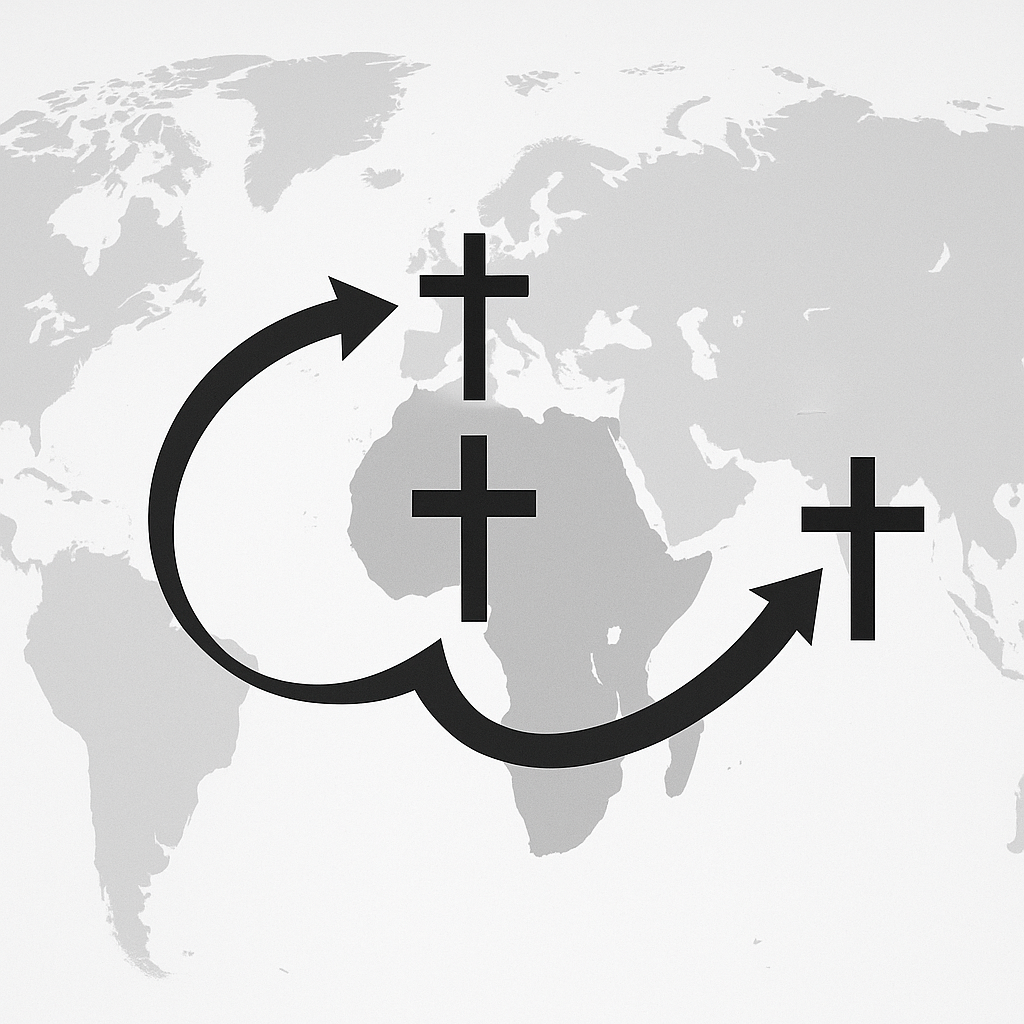Christianity’s Changing Geography: The Shift to Africa & Asia
For centuries, Christianity was often seen as a Western religion — deeply rooted in Europe and later North America. Cathedrals in Rome, London, and Paris symbolized its power, and the Vatican stood as its global center. But in the 21st century, a quiet revolution has transformed Christianity’s map. The faith’s fastest growth is no longer in the West but in the Global South — especially in Africa and Asia. This shift marks one of the most profound demographic and spiritual changes in modern religious history.
From European Heartlands to Global South
In the early 1900s, most Christians lived in Europe. The continent was home to nearly two-thirds of the world’s Christian population. However, as Europe became increasingly secular and birth rates declined, the growth of Christianity began to slow. Meanwhile, Africa and parts of Asia experienced a major spiritual awakening. Today, the majority of the world’s Christians live outside Europe and North America. Africa alone is home to hundreds of millions of believers, and the numbers continue to rise sharply every decade.
This transformation is not just about population statistics. It represents a deeper change in the cultural and spiritual identity of Christianity. The faith is being reshaped by local traditions, languages, and social realities of African and Asian communities, creating new expressions of belief that are vibrant, community-driven, and socially active.
Africa: The New Center of Christian Growth
Africa is now considered the continent with the fastest-growing Christian population. In countries like Nigeria, Kenya, Uganda, and the Democratic Republic of Congo, churches are thriving. Worship services are lively and filled with music, dance, and a strong sense of fellowship. Pentecostal and Evangelical movements, in particular, have found immense popularity. This growth is fueled by several factors. The first is demographics — Africa has a young population with strong family structures that pass on faith to the next generation. Second, Christianity in Africa often connects closely with community life, addressing social issues such as poverty, education, and healthcare. Many churches provide schools, clinics, and social programs, becoming centers of both spiritual and social transformation.
Furthermore, African Christianity often integrates local cultural expressions. Traditional music, storytelling, and collective worship have given the faith a distinctly African rhythm. This indigenization has made Christianity more relatable and emotionally powerful for millions.
Asia: Faith in the Midst of Diversity
Asia, too, has seen a steady rise in Christian communities, though the growth has been more complex. In countries like South Korea, the Philippines, and India, Christianity has flourished in unique ways. South Korea, for instance, has become a global center of Protestant Christianity, sending missionaries around the world. The Philippines remains one of the most devoutly Christian nations in Asia, with its faith woven deeply into national culture and festivals.
In India, Christianity is growing especially in the southern and northeastern regions. While Christians remain a minority, their presence in education, healthcare, and social welfare is strong. In China, despite restrictions, underground churches have multiplied rapidly. Many scholars believe that China may have one of the world’s largest Christian populations within a few decades. What makes Asian Christianity distinct is its ability to blend faith with cultural identity. Churches in Asia often reflect local architecture, languages, and values. The result is a faith that feels both universal and deeply rooted in regional traditions.
The Decline of the West’s Dominance
While the Global South experiences a spiritual surge, Europe and North America are witnessing the opposite trend. Secularism, materialism, and individualism have weakened the influence of organized religion. Church attendance has fallen, and younger generations often identify as “spiritual but not religious.”
Yet, this decline has also prompted Western churches to rethink their approach. Many are embracing new forms of worship, digital evangelism, and interfaith dialogue. In some ways, the growth of Christianity in Africa and Asia is now inspiring renewal in the West. The flow of missionaries has even reversed — African and Asian pastors are now serving in European cities, bringing fresh energy and faith to declining congregations.
A New Global Christianity
The shift to Africa and Asia is changing not just where Christians live, but how Christianity looks, sounds, and acts. The new global Christianity is less about cathedrals and more about communities. It is multilingual, multiethnic, and often centered on social justice, healing, and hope. This transformation shows that Christianity’s essence — faith, compassion, and service — transcends geography. Whether in a village in Kenya, a city in India, or a church in Seoul, the message of love and redemption continues to find new voices and new homes.
As the 21st century unfolds, the spiritual heart of Christianity now beats strongest in the Global South. Africa and Asia are not just followers of an imported faith; they are now its leaders — shaping theology, worship, and global mission in ways that reflect the dynamic realities of their own people and cultures.
~Religion World Bureau









